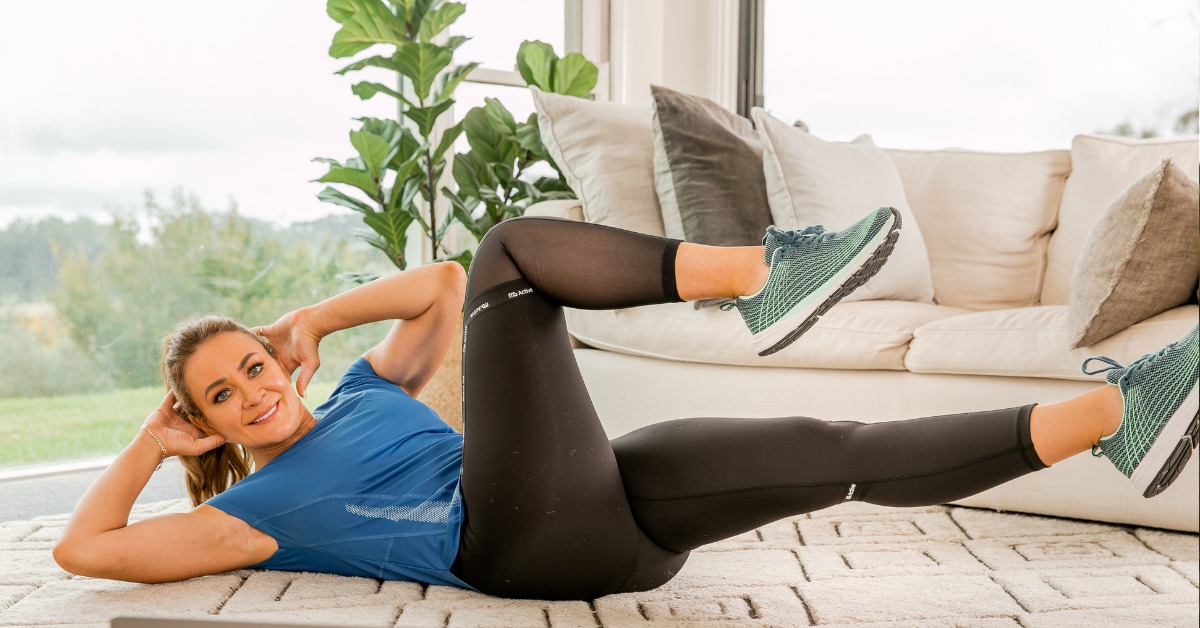
Micro-Workouts: 5-Minute Exercises That Add Up.
"Micro-workouts are short, powerful bursts of exercise lasting five minutes or less, designed to fit seamlessly into even the busiest schedule. Backed by science, these mini sessions boost strength, stamina, and mood while breaking up sedentary time. Done consistently, they prove that every minute of movement counts toward a healthier, fitter lifestyle."
💪 Fitness Guru
39 min read · 13, Aug 2025

Micro-Workouts: 5-Minute Exercises That Add Up
In the modern world, busy schedules, long work hours, and lifestyle distractions often leave little time for traditional exercise routines. However, fitness experts are increasingly advocating for micro-workouts — short, focused bursts of physical activity that can be done anytime, anywhere, and still provide significant health benefits. These workouts typically last five minutes or less, yet when done consistently throughout the day, they can improve strength, endurance, flexibility, and mental well-being.
What Are Micro-Workouts?
Micro-workouts, sometimes referred to as “exercise snacks” or “bite-sized fitness,” are short exercise sessions designed to fit seamlessly into your daily routine. Unlike traditional 30–60 minute workouts, micro-workouts focus on maximizing intensity and efficiency in a small time frame.
For example:
- 5 minutes of bodyweight squats before breakfast.
- 4 minutes of high-intensity interval training (HIIT) between work calls.
- A quick set of push-ups during TV commercial breaks.
These small bursts of exercise may seem insignificant, but research shows they add up over time to produce meaningful health benefits.
Why Micro-Workouts Work
Micro-workouts are effective because they:
- Increase Daily Activity Levels — By sprinkling exercise throughout the day, you counteract the harmful effects of prolonged sitting.
- Boost Metabolism — Short bursts of activity can trigger the “afterburn effect,” where your body continues burning calories even after you finish.
- Improve Cardiovascular Health — Even brief sessions of moderate-to-vigorous exercise can improve heart health if done regularly.
- Enhance Strength & Endurance — High-intensity short sessions can stimulate muscle growth and endurance improvements similar to longer workouts.
- Lower Stress Levels — Physical activity releases endorphins, improving mood and focus in just a few minutes.
The Science Behind Micro-Workouts
Research from the American College of Sports Medicine (ACSM) suggests that as little as 10 minutes of cumulative daily exercise can improve cardiovascular fitness, provided the effort is moderate to vigorous. Another study published in PLOS ONE found that three 10-minute HIIT sessions per week were just as effective for improving fitness as longer continuous workouts.
The key is intensity — micro-workouts are not meant to be easy strolls. They often involve compound movements (like squats, burpees, or push-ups) that engage multiple muscle groups, raising your heart rate quickly.
Benefits of Micro-Workouts
1. Time Efficiency
Perfect for busy individuals who can’t commit to long gym sessions.
2. Flexibility
You can do them anywhere — home, office, park, or even a hotel room.
3. Lower Mental Barriers
Starting a 5-minute workout feels less daunting than a 1-hour session.
4. Consistency
Easier to stick with over the long term, leading to better results.
5. Accessibility
Requires little or no equipment.
How to Incorporate Micro-Workouts into Your Day
Here’s a practical day plan for busy people:
- Morning — 5 minutes of bodyweight squats, push-ups, and planks after waking.
- Midday — Quick HIIT session between meetings: jumping jacks, high knees, and burpees.
- Evening — 5-minute yoga flow to improve flexibility and aid recovery.
- Before Bed — Light stretching to relax muscles and promote sleep.
By spreading these short workouts across the day, you can easily accumulate 20–30 minutes of quality exercise without feeling overwhelmed.
Example 5-Minute Micro-Workouts
1. Bodyweight Power Circuit
Duration: 5 minutes
- 40 seconds squats
- 20 seconds rest
- 40 seconds push-ups
- 20 seconds rest
- 40 seconds lunges
- 20 seconds rest
- 40 seconds burpees
- 20 seconds rest
- 40 seconds plank hold
- 20 seconds rest
2. Office-Friendly Micro-Workout
Duration: 5 minutes
- 30 seconds seated leg raises
- 30 seconds seated torso twists
- 30 seconds desk push-ups
- 30 seconds standing calf raises
- Repeat for 2–3 rounds as time permits.
3. Cardio Blast
Duration: 5 minutes
- 1 minute high knees
- 1 minute jumping jacks
- 1 minute butt kicks
- 1 minute mountain climbers
- 1 minute burpees
Micro-Workout Safety Tips
- Warm up briefly before starting (e.g., arm circles, marching in place).
- Focus on form to avoid injury during high-intensity moves.
- Listen to your body — stop if you feel sharp pain or dizziness.
- Gradually increase intensity over time.
Who Can Benefit Most from Micro-Workouts?
- Busy professionals with limited time.
- Work-from-home employees who sit for long hours.
- Beginners intimidated by long gym sessions.
- Travelers needing portable fitness options.
- Older adults wanting low-impact, frequent movement.
Common Myths About Micro-Workouts
- “They’re too short to be effective.”
- Studies show short workouts can match the benefits of longer ones if done intensely.
- “You need equipment to see results.”
- Bodyweight exercises can be just as effective.
- “They can’t build muscle.”
- High-intensity bodyweight training and resistance bands can promote muscle growth.
Micro-workouts: 5-Minute Exercises That Add Up — In today’s fast-paced world, where work, family, and daily responsibilities consume most of our time, the idea of dedicating an uninterrupted hour to the gym can feel impossible. This is where micro-workouts, also called “exercise snacks” or “bite-sized fitness,” come in — short, focused bursts of physical activity lasting around five minutes or less that can be done anywhere and at any time, often without equipment, yet still deliver meaningful fitness results when performed consistently. The concept is simple: instead of one long workout session, you scatter short, high-intensity or moderate-intensity exercises throughout the day, allowing you to accumulate substantial activity without disrupting your schedule. The science is compelling — studies from the American College of Sports Medicine and other research bodies confirm that even ten minutes of cumulative daily exercise can improve cardiovascular health, provided it’s performed at a moderate-to-vigorous intensity, and high-intensity interval training (HIIT) in small doses can deliver similar muscle and endurance benefits as traditional training. For example, starting your morning with two minutes of push-ups, squats, and planks, sneaking in a three-minute cardio burst of high knees and jumping jacks between work calls, or finishing your evening with a short yoga flow can cumulatively add up to 20–30 minutes of quality movement per day without the psychological barrier of “finding time” for a long workout. The benefits are many — improved cardiovascular health, increased metabolism, enhanced muscle strength, better endurance, and boosted mood due to endorphin release, all with minimal disruption to daily life. For busy professionals, micro-workouts mean exercise becomes part of the day instead of a separate, time-consuming task; for beginners, they remove the intimidation of committing to a long gym routine; for older adults, they offer low-impact, frequent activity that supports mobility and balance; and for travelers, they provide a portable way to stay fit without relying on hotel gyms. While some may assume that such short workouts are too brief to make a difference, the key lies in intensity and consistency — compound movements like burpees, lunges, squats, push-ups, and planks work multiple muscle groups simultaneously, raise your heart rate quickly, and help burn calories both during and after the session due to the afterburn effect. Incorporating them can be as easy as following a 5-minute power circuit (40 seconds squats, 20 seconds rest, 40 seconds push-ups, 20 seconds rest, 40 seconds lunges, 20 seconds rest, 40 seconds burpees, 20 seconds rest, 40 seconds plank hold, 20 seconds rest) or an office-friendly set (desk push-ups, seated leg raises, calf raises, and torso twists). Safety is still important — warming up briefly, focusing on proper form, and increasing intensity gradually ensures you avoid injury. Micro-workouts also combat the health risks of prolonged sitting by breaking up sedentary time with movement, which improves circulation and maintains flexibility. They are accessible to all fitness levels, adaptable to different environments, and require no special equipment — though resistance bands or light dumbbells can be added for progression. Myths like “you need an hour for exercise” or “you can’t build muscle with short workouts” have been debunked by modern sports science, showing that it’s not the duration but the effort and frequency that count. The bottom line is that micro-workouts fit seamlessly into modern life — whether you’re doing squats while your coffee brews, planks while watching TV, or quick HIIT bursts before a meeting, every small session contributes to better health. Over time, these short bouts of exercise build stamina, increase strength, support weight management, and improve mood — proving that fitness doesn’t have to be all or nothing, and just five minutes at a time really does add up.
In an age where time has become one of our most valuable resources, the concept of micro-workouts — short, focused bursts of physical activity lasting five minutes or less — has emerged as a practical, science-backed solution for those who struggle to fit traditional exercise into their day, offering the benefits of improved fitness, cardiovascular health, and overall well-being without requiring long gym sessions; these bite-sized workouts, sometimes called “exercise snacks,” can be seamlessly inserted into everyday life — whether it’s doing squats while your coffee brews, lunges in the hallway between meetings, a quick set of push-ups before a shower, or a mini high-intensity circuit during TV commercials — and although each session is short, the cumulative effect over days, weeks, and months is significant, with research from the American College of Sports Medicine showing that even 10 minutes of total daily activity can improve cardiovascular health if done at moderate-to-vigorous intensity, while other studies, including those in PLOS ONE, demonstrate that brief HIIT sessions can match or even exceed the benefits of longer traditional workouts when it comes to endurance, strength, and fat loss; the effectiveness of micro-workouts lies in their ability to raise heart rate quickly, engage multiple muscle groups through compound movements like burpees, squats, push-ups, and planks, and trigger the “afterburn effect” — where the body continues burning calories after exercise — all without the psychological barrier of committing to a full one-hour workout, making them ideal for busy professionals, parents, students, remote workers, travelers, and even older adults who want to maintain strength, flexibility, and balance without overexertion; their flexibility is unmatched, requiring little to no equipment — though resistance bands, dumbbells, or household items can be added for progression — and their adaptability means they can be low-impact for beginners or high-intensity for experienced exercisers; beyond physical health, micro-workouts improve mental well-being by releasing endorphins, reducing stress, enhancing focus, and breaking up the monotony of sedentary workdays, which in turn supports productivity; incorporating them into your daily routine can be as simple as performing a 5-minute power circuit consisting of 40 seconds squats, 20 seconds rest, 40 seconds push-ups, 20 seconds rest, 40 seconds lunges, 20 seconds rest, 40 seconds burpees, 20 seconds rest, and 40 seconds plank hold, or an office-friendly routine with seated leg raises, torso twists, desk push-ups, and calf raises, repeated twice; safety remains important, so even though sessions are short, a quick warm-up (arm circles, marching in place) and a focus on proper form can prevent injury, and intensity should be increased gradually; micro-workouts challenge the outdated belief that “you need at least 30 minutes” or “you can’t build muscle with short sessions,” as numerous case studies and sports science research show that muscle growth and endurance gains depend more on intensity and consistency than sheer duration, meaning three to five 5-minute workouts spaced throughout the day can equal or even surpass a single long workout in effectiveness; the benefits also extend to combating the health risks of prolonged sitting — even a two-minute activity break every hour improves circulation, reduces stiffness, and prevents postural issues; psychologically, short workouts lower the mental resistance to starting exercise because committing to just five minutes feels achievable, and once in motion, people often continue beyond the planned time; for weight loss and body composition, micro-workouts can increase daily calorie burn and preserve lean muscle mass, particularly when paired with proper nutrition, and because they’re so easy to fit into any schedule, adherence rates are typically higher than with rigid, long-duration programs; for example, someone might start the day with two minutes of push-ups and squats, do a three-minute HIIT burst between Zoom calls, take a five-minute brisk walk after lunch, perform a short yoga stretch in the evening, and end the day with a plank challenge before bed, accumulating 20–25 minutes of purposeful movement without ever blocking off a full workout hour; these sessions can be themed by focus — strength, cardio, flexibility, or mobility — to keep things varied and balanced, and over time, the compounding effect leads to noticeable improvements in stamina, strength, body tone, and mental clarity; common myths, such as “short workouts don’t count” or “you need a gym to get results,” continue to be debunked as more people embrace this sustainable approach, proving that fitness is not about finding extra hours in your day, but about strategically using the minutes you already have; ultimately, micro-workouts represent a shift in how we think about exercise, moving away from an all-or-nothing mentality to a more integrated, lifestyle-based approach where every movement counts, and just five minutes at a time — whether done at home, in the office, in a hotel room, or in a park — can accumulate into a healthier, stronger, more energetic version of yourself without overwhelming your schedule, your body, or your motivation, making them one of the most accessible and impactful fitness trends for the modern world.
Conclusion
In today’s fast-paced world, finding time for exercise can be challenging, but micro-workouts prove that you don’t need an hour in the gym to stay healthy and fit. By incorporating several short, intense bursts of exercise into your day, you can boost your metabolism, strengthen your muscles, improve your mood, and protect your long-term health. Whether you’re at home, in the office, or traveling, a healthier, more active lifestyle is just five minutes away — and those minutes add up more than you think.
Q&A Section
Q1 :- What is the main advantage of micro-workouts?
Ans:- The main advantage is time efficiency — you can fit them into even the busiest schedule while still gaining significant health benefits.
Q2 :- Can micro-workouts replace regular gym sessions?
Ans:- Yes, if performed with enough intensity and consistency, they can provide similar cardiovascular and muscular benefits as longer workouts.
Q3 :- How many micro-workouts should I do per day?
Ans:- Aim for 3–5 sessions of 3–5 minutes each to accumulate 15–25 minutes of total daily activity.
Q4 :- Do I need special equipment for micro-workouts?
Ans:- No, most micro-workouts use bodyweight exercises, but resistance bands or light dumbbells can be added for variety.
Q5 :- Are micro-workouts safe for beginners?
Ans:- Yes, but beginners should start with low-impact moves, focus on proper form, and gradually increase intensity.
Similar Articles
Find more relatable content in similar Articles

Epigenetics and Exercise – How Your Workout Affects Your Chi..
“Exploring how regular physica.. Read More

The Perfect Daily Skincare Routine: Morning to Night Essenti..
A perfect daily skincare rout.. Read More

Fitness for the Brain – How Workouts Rewire Your Mind...
“Discover how physical exercis.. Read More

How to Build a Skincare Routine Based on Your Skin Type (Oil..
A personalized skincare routi.. Read More
© 2024 Copyrights by rFitness. All Rights Reserved.